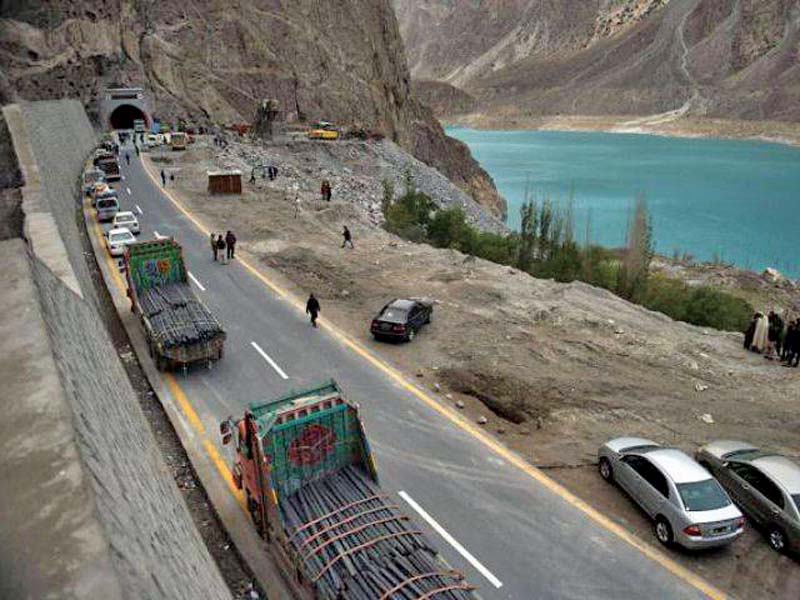
Though branded as a blueprint to expedite regional integration and cooperation, the CPEC is also a high-risk bet due to Pakistan’s systemic weaknesses in fiscal management and execution of mega projects.
Dealing with expected cost overruns
Cost overrun in any mega infrastructure project is a perennial problem globally and in many cases revenues from these projects never cover even baseline project costs.
A simple ‘reference class forecasting’ exercise can reveal that for most projects in CPEC portfolio, costs are systematically underestimated while benefits are overestimated. So in order to prevent CPEC projects getting into cost squabbles, there is a dire need to arrange alternative financing especially from the private sector.
Currently, the lion’s share of CPEC financing is shouldered by Chinese and Pakistani banks.
Yes, some funding for new infrastructure may come from privatisation of existing national assets but it may not be feasible due to political reasons. The government may need to target a class of investors that has long-term financing needs such as insurance companies and pension funds but again, such infrastructure investments are subject to market failures.
The creation of project-based special-purpose vehicles (SPV) is a necessary condition for private sector engagement by ensuring transparency and limiting the government’s ability to channel revenues from ‘star’ projects to ones that get mired in controversies.
Unfortunately, our bureaucracy has not been formally trained in managing corporate affairs and SPVs like Pakistan Power Park Management Company eventually become defunct.
The conundrum of job creation
The CPEC could end up as a paper tiger especially when it comes to creation of new jobs.
Rapid influx of foreign exchange in early harvest projects would make rupee stronger but only in the short run. Free trade with China will eventually change our balance of trade drastically in favour of China and projected job loss to China due to trade deficit could go into millions.
The trucking and logistics industry of Pakistan alone will suffer greatly from the inundation of Chinese trucks in Pakistan.
The $34 billion loan by Chinese government for financing energy projects in Pakistan will end up in the hands of Chinese private companies as they have been awarded all energy contracts.
The International Monetary Fund (IMF) has recently given a heads-up that CPEC-related imports from China and outflow of foreign exchange will eventually exceed committed inflows by the Chinese government.
The bigger question is: Will the agglomeration of industries in Pakistan even happen?
For lesser developed areas in Khyber-Pakhtunkhwa (K-P) and Balochistan, a policy of trade liberalisation will help somehow, but the availability of skilled labour force will remain a crucial factor.
Fragmentation of production and services also depend a lot on the soft aspect of CPEC i.e. standards, governance and time spent at borders.
However the ultimate litmus test for K-P and Balochistan would be to see if government can tackle problems of information asymmetries in market conditions, poorly enforced property rights and a lack of accountability to public.
As of now, in absence of well-thought trade policies, CPEC is merely a transport corridor for China that won’t lead to development of new economic clusters in Pakistan.
Way forward
CPEC appears to be a great success story on paper but let’s not forget about its downside.
Pakistan doesn’t want to end up like Sri Lanka whose prime minister was told by the Chinese ambassador that “we want our money, not your empty airport” after rejecting an offer of debt-for-equity swap last July.
CPEC should not become a boulevard of broken dreams and that is only possible if our policy makers in the P-block are ‘empowered’ to do their due diligence.
Transparency is a key to this and bypassing regulatory bodies such as Pepra and Nepra should be avoided at all costs. A policy tunnelling approach by simulating various scenarios and performing distributional analysis can give government a much better picture of ‘Pakistan in 2020.’
The writer is a Cambridge graduate and is working as a management consultant
Published in The Express Tribune, October 24th, 2016.
Like Business on Facebook, follow @TribuneBiz on Twitter to stay informed and join in the conversation.
1729662874-0/One-Direction-(1)1729662874-0-405x300.webp)


1722421515-0/BeFunky-collage-(19)1722421515-0-165x106.webp)




1732084432-0/Untitled-design-(63)1732084432-0-270x192.webp)








COMMENTS (2)
Comments are moderated and generally will be posted if they are on-topic and not abusive.
For more information, please see our Comments FAQ